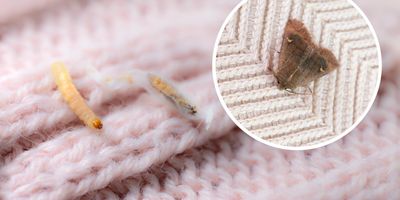Moth Treatment
Precision Moth Solutions for a Peaceful Home
Are moths causing damage to your clothing, stored goods, or dry food supplies? At Eastern Termite & Pest Control, we specialize in fast, effective, and lasting moth removal services for residential and commercial properties, including clothing retailers, storage facilities, and food service businesses across Los Angeles, Orange, Riverside, San Bernardino Counties & surrounding Southern California cities.
Whether you’re dealing with clothes moths that eat through fabrics, pantry moths infesting dry goods, or moths invading commercial storage, our trained technicians will identify the infestation source, eliminate all life stages of the moth, and implement long-term prevention strategies.
Who We Serve:
- Homeowners – Protect clothing, carpets, and pantry items from moth damage
- Clothing Retailers – Keep merchandise moth-free and maintain brand integrity
- Storage Facilities – Prevent moth infestations in units and stored goods
- Food Service & Restaurants – Avoid food contamination and meet health regulations
- Commercial & Industrial Sites – Secure inventory, products, and packaging
Why Choose Eastern Termite & Pest Control for Moth Removal?
- Proudly serving our community as a trusted pest control company since 1996
- Expert solutions for both fabric moths and pantry moths
- Family- and food-safe treatments that comply with industry standards
- Discreet, professional service for retail and hospitality environments
- Customized moth prevention plans for homes and businesses
- Fast response times and flexible scheduling options
Don't let moths threaten your comfort, your products, or your reputation. Contact Eastern Termite & Pest Control today for reliable moth control.
📞 Call today at (800) 434-1662 for an inspection and get rid of moths for good.

Eastern Termite and Pest Control
1243 S Ardmore Ave
Los Angeles, CA 90006
Phone: (323) 373-9992
Email: pest@easterncontrol.com
© 2025 Eastern Termite and Pest Control. All rights reserved.
This website uses cookies.
We use cookies to analyze website traffic and optimize your website experience. By accepting our use of cookies, your data will be aggregated with all other user data.